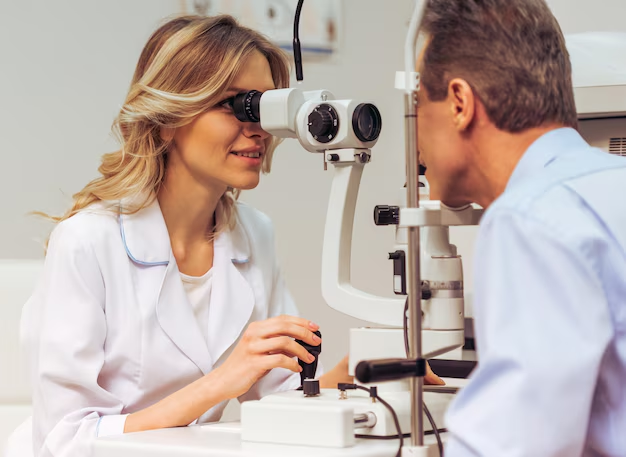Understanding the Connection Between Cataracts and Dry Eyes: What You Should Know
Cataracts and dry eyes are two common eye conditions that often affect people as they age. While they are distinct medical issues, many individuals experience them concurrently and wonder if there is a connection. Are cataracts causing those uncomfortable dry eye symptoms, or is there more to it? Read on as we dive into the relationship between cataracts and dry eyes, explore their causes, symptoms, and management strategies, and provide you with the necessary insights to understand and manage these conditions effectively.
What are Cataracts?
Cataracts occur when the normally clear lens of your eye becomes cloudy. This can lead to progressive vision impairment, as the clouded lens prevents light from passing through effectively. Cataracts are largely age-related but can also result from other factors such as genetics, trauma, certain medications, or medical conditions like diabetes.
Symptoms of Cataracts
The symptoms are generally gradual, which can make early detection challenging. Here are some signs to watch out for:
- Blurry Vision: A common symptom that progressively worsens over time.
- Sensitivity to Light: Bright lights may seem glaring or cause discomfort.
- Double Vision: Seeing multiple images of a single object.
- Fading or Yellowing of Colors: Colors may not appear as vivid or may seem yellowish.
- Night Vision Problems: Difficulty seeing in low-light conditions or at night.
What Causes Dry Eyes?
Dry eyes, or dry eye syndrome, arise when your eyes don't produce enough tears or the tears evaporate too quickly. Tears are essential for maintaining the health of the front surface of the eye and for providing clear vision.
Symptoms of Dry Eyes
Dry eye symptoms can range from mild to severe and may include:
- Dry, scratchy, or burning sensation: Common discomforts associated with dry eyes.
- Redness: The eyes may appear bloodshot.
- Watery Eyes: Surprisingly, excessive tearing can be a symptom due to the irritation of dry eyes.
- Blurred Vision: This may come and go, depending on the severity of the dryness.
- Fatigue: Eyes may feel tired more quickly than usual, especially during reading or computer use.
Is There a Link Between Cataracts and Dry Eyes?
The Surgical Connection
One area where cataracts and dry eyes intersect is during cataract surgery. Cataract surgery involves removing the cloudy lens and replacing it with an artificial lens. Post-surgery, some patients may experience dry eye symptoms due to increased eye sensitivity or changes in tear production.
Medications and Age
Both cataracts and dry eyes are influenced by aging. As we age, the risk of developing cataracts increases, and tear production may decrease, leading to dry eyes. Certain medications prescribed for other age-related health conditions can also exacerbate dry eyes.
Systemic Health Factors
Conditions like diabetes can contribute to both cataracts and dry eyes, establishing an indirect link between the two.
Practical Strategies to Manage Cataracts and Dry Eyes
Dealing with cataracts and dry eyes simultaneously can be challenging. Here are some practical tips:
Managing Cataract Symptoms
- Regular Eye Exams: Ensure regular check-ups with an eye care professional to monitor the progression of cataracts.
- Glasses or Contacts: Update your prescription eyewear to improve visual clarity.
- Lighting: Use brighter lights at home to assist with vision tasks.
- Sunglasses: Protect your eyes from UV light which may worsen cataracts.
Managing Dry Eye Symptoms
- Artificial Tears and Eye Drops: Utilize lubricating eye drops to keep eyes moist.
- Humidifiers: Add moisture to the air to prevent tear evaporation.
- Screen Breaks: Take frequent breaks from screens to reduce strain and blinking.
- Omega-3 Supplements: Some studies suggest that omega-3 fatty acids can improve tear production.
Lifestyle Adjustments for Eye Health
Beyond targeted treatments, certain lifestyle changes can contribute to better eye health and could alleviate symptoms of both conditions.
Diet and Nutrition
Ensure your diet includes foods rich in omega-3 fatty acids, vitamins A, C, and E, and minerals like zinc. These nutrients can support eye health and prevent degeneration.
Hydration
Adequate hydration is crucial for maintaining tear production and general eye health. Aim for at least eight glasses of water a day.
Avoiding Irritants
Reduce exposure to smoke, wind, and other environmental factors that can exacerbate dry eyes.
When to Seek Professional Help
It's essential to consult an eye care professional if:
- Vision Changes: You experience significant or sudden changes in vision.
- Persistent Symptoms: Symptoms of dry eyes or cataracts persist despite self-care measures.
- Eye Pain: Any new or unusual pain should be promptly addressed.
Embracing a Preventive Approach
Getting regular comprehensive eye exams is a proactive way to track changes in vision and address issues early before they escalate.
Key Takeaway: Understanding and Managing Your Eye Health
While cataracts do not directly cause dry eyes, the two conditions can coexist, particularly as we age. By understanding and distinguishing between the symptoms, you can better manage each condition with the appropriate treatment or lifestyle changes.
Action Steps for Maintaining Eye Health
- 👍 Stay Informed: Learn about symptoms and treatments for both cataracts and dry eyes.
- 👀 Regular Check-Ups: Schedule eye exams regularly, especially if you notice any changes.
- 💧 Focus on Hydration: Drink plenty of water for overall eye moisture.
- 💡 Lighting and Comfort: Ensure good lighting and reduce screen time.
- 🥗 Healthy Diet: Include eye-healthy nutrients in your meals.
By taking informed, proactive measures, you can effectively manage cataracts and dry eyes, enhancing your quality of life and maintaining your vision well into the future.

Related Articles
- Are Cataracts Curable
- Are Cataracts Genetic
- Are Cataracts Hereditary
- Are Cataracts Nuclear Sclerosis
- Are Cataracts Painful
- Are Ivizia Eye Drops Okay After Cataract Surgery
- Are You Awake During Cataract Surgery
- Are You Awake For Cataract Surgery
- Are You Put To Sleep For Cataract Surgery
- Are You Sedated For Cataract Surgery